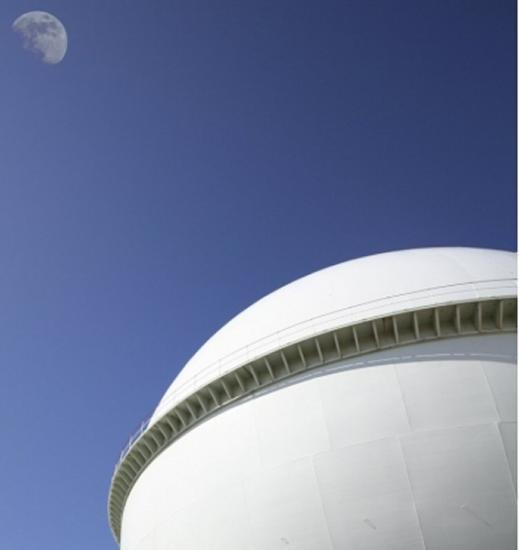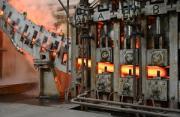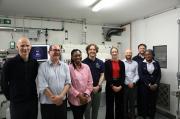
This site uses cookies, by continuing to use this site you accept the terms of our privacy policy
Feed 2.0 Loading...
Fast breeder was Britain's 'man on the moon moment'
9th November 2009

It was Britain's man-on-the-moon moment, when a decade of scientific and engineering breakthroughs culminated in the most advanced nuclear plant in the world.
A workforce of 3000 had laboured around the clock for four years to build the experimental plant that would pave the way for electricity "too cheap to meter".
Then, on November 14, 1959, the lifeless hulk of vessels, valves and pipes installed inside the biggest steel ball ever seen in Britain started its slow heartbeat.
The moment of criticality inside the Dounreay Fast Reactor gave birth to a "caged tiger", in the words of Chapman Pincher in the Daily Express.
And it raised the hopes of a nation seeking new sources of energy. Experts believed every town in the country could be powered by its own fast reactor within 20 years.
But a series of non-nuclear faults would plague the research programme in the 1970s, Chernobyl and health concerns undermined public confidence in the 1980s, and the cost of plutonium and a glut of uranium worldwide signaled the end in the early 1990s.
Today, fifty years after that historic breakthrough, the heartbeat of Britain's first fast breeder reactor is dying - it's decommissioning and dismantling now one of the country's most important nuclear clean-up jobs.
"What Britain did in the 1950s was every bit as impressive, if not more so, than what NASA did in the 1960s. This was Britain's man-on-the-moon moment, if not better," said Mike Brown, the engineer in charge of decommissioning Dounreay's two fast reactors.
"From the creation of a design committee in 1951, Britain had delivered a working fast reactor by the end of the decade, with some big gaps in our knowledge. Those gaps were filled only with experimentation.
"Putting a man on the moon was the next step in a rocket programme that was already into space. Designing, building and operating a fast reactor from scratch, at a time when knowledge and resources were so scarce, I believe was an even bigger accomplishment. What they achieved here in the 1950s was phenomenal."
In the 1950s, fast breeder reactors were seen as a more efficient way to harness the energy contained in uranium.
The fuel in the core could be burned much more intensely and some of the energy released could be captured to "breed" a new fuel - plutonium - from an otherwise useless form of uranium that was packed around the core.
But the reaction was so intense that pressurised water or gas - the normal medium for removing the heat from a nuclear reactor - wasn't up to the task. The scientists used liquid metal instead.
Almost 170,000 litres of a sodium and potassium alloy, known as NaK, were poured into the experimental fast reactor at Dounreay. It was very effective at rapid transfer of intense heat. But the downside was its chemical hazard - the noxious alloy poses a serious risk to health and would ignite easily if mishandled.
What remains of this once-pioneering system is regarded today as one of the biggest hazards in the UK. Its destruction is second only to an old fuel facility at Sellafield in the priorities of the Nuclear Decommissioning Authority and is one of the strategic objectives of the UK's Department of Energy and Climate Change.
More than two-thirds of the NaK has been destroyed so far. The 47,000 litres that remain are heavily contaminated with radioactive caesium, so it is being scrubbed clean using an ion exchange resin as part of the destruction process. All of it should be destroyed by 2013.
When the liquid metal has gone, almost 1000 "breeder" elements positioned around the core will be exposed. These will be coated with residues of NaK. Their removal, cleaning and dismantling, using long robotic tools, will take another two years to complete.
The removal of all the liquid metal and nuclear material will leave an empty structure that can be dismantled. But radiation levels will still be too high for workers to do this manually, so much of the dismantling work will be done using robots. By 2025, when the entire structure has been dismantled, the total decommissioning bill is expected to be �240 million.
Related Businesses
Related Articles
15/2/2025
Dounreay to take on 23 new apprentices
One of Britain's most complex environmental restoration projects is taking on 23 new apprentices. The decommissioning of the former centre of fast reactor research and development at Dounreay is continuing to create long-term opportunities for young people.
10/1/2025
Fusion-grade Steel Produced At Scale In UK-first
Researchers achieve 10x production cost savings for reduced activation steel. A United Kingdom Atomic Energy Authority (UKAEA) working group has successfully demonstrated the industrial scale production of fusion-grade steel.
22/12/2024
UKAEA To Lead The Creation Of A Robotics And AI Cluster
UKAEA will lead the creation of a new £4.9m nuclear robotics and artificial intelligence cluster across Cumbria and Oxfordshire. The robotics and AI cluster was announced by UK Research and Innovation (UKRI) as one of seven new projects to kickstart economic growth and address regional needs: www.ukri.org The robotics and AI cluster will link Cumbria and Oxfordshire to accelerate the decommissioning of the UK's legacy nuclear fission facilities and keep people out of hazardous environments.
5/12/2024
Diamonds Are Forever? World-first Carbon-14 Diamond Battery Made In Uk
The world's first carbon-14 diamond has been produced with the potential to provide power for thousands of years. Scientists and engineers from the UK Atomic Energy Authority (UKAEA) and the University of Bristol have successfully created the world's first carbon-14 diamond battery.
18/11/2024
Nuclear Restoration Services Has Appointed Dave Wilson As Managing Director Of Its Dounreay Division
He joins from AtkinsRealis, where he was market director and delivery lead for its nuclear decommissioning and waste services business, and officially takes up the post today (18 November 2024), He succeeds John Grierson who has served as interim MD since May. NRS CEO Rob Fletcher said, "I am very pleased that Dave Wilson has agreed to join the team at Dounreay.
5/11/2024
NDA Supply Chain Award Winners 2024 Revealed
The Nuclear Decommissioning Authority group have announced five organisations as winners of this year's supply chain awards. Morgan Sindall Infrastructure, The Decommissioning Delivery Partnership, PA Consulting, Antech and The Higher Activity Waste Thermal Treatment Tranche 1 Team are the big winners in this year's supply chain awards.4/11/2024
UKAEA Monthly Newsletter Latest Edition
Find out what has been happening at UKAEA in our monthly newsletter. Read about our recent activities and upcoming events.
23/10/2024
My Experience On The Commissioning Graduate Programme At Sellafield Ltd
With a degree in electrical and electronic engineering and a keen interest in the nuclear sector, Anouschka knew Sellafield would be the best place for her to begin her career in the industry. That career has already seen her relocate from Sheffield to Cumbria and scooping the title of Sellafield Ltd Graduate of the Year.9/10/2024
Sellafield Ltd Welcomes Its Largest Ever Graduate Cohort
More than 140 graduates have started at Sellafield Ltd. Over 140 graduates have just started their exciting careers with the company in a range of business and technical disciplines, supporting Sellafield Ltd in its mission to create a clean and safe environment for future generations.
1/10/2024



